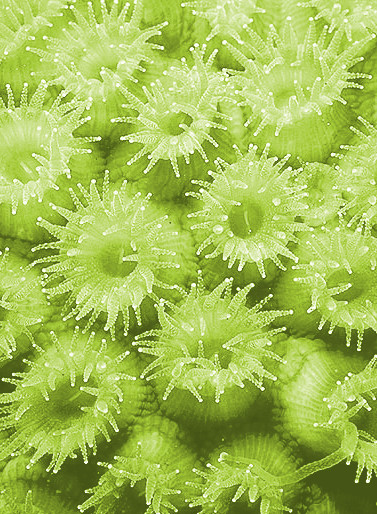Coral sounds studied
 Gas bubbles produced by marine algae during photosynthesis “ring” when released, a new study has found.
Gas bubbles produced by marine algae during photosynthesis “ring” when released, a new study has found.
The ringing sound gets more intense with more algal cover, finds the study by a US Naval husband and wife team.
The experts say the finding may allow a simple and fast way to measure algal cover on coral reefs, which is one of the strongest indicators of stress on coral reefs.
Coral reefs are noisy places, with sounds emanating from water movement, ocean creatures, and other sources.
Previous studies had identified a component of the underwater soundscape that correlated with the abundance of macroalgae (those that form leaf-like structures and filaments) present over the reef, but the mechanism responsible for the sound was unknown.
To determine whether the algae themselves were responsible, the authors studied sound emissions from a tank of the Hawaiian invasive algae Salicornia gracilaria.
They found that release of gas bubbles - a combination of oxygen released from photosynthesis and nitrogen - produced a “ringing” from the oscillations of the bubbles as they assumed a spherical shape in the water.
The sound ranged from 2 to 20 kilohertz, matching that from oceanic coral reefs.
Bubble production and sound emission is not unique to this algal species, the authors note, and so the measurement of this type of sound in marine environments may be a proxy for algal and aquatic plant photosynthetic activity in general.
If so, it could allow a rapid and inexpensive alternative to visual methods for estimating algal abundance, which are time-consuming and expensive.







 Print
Print